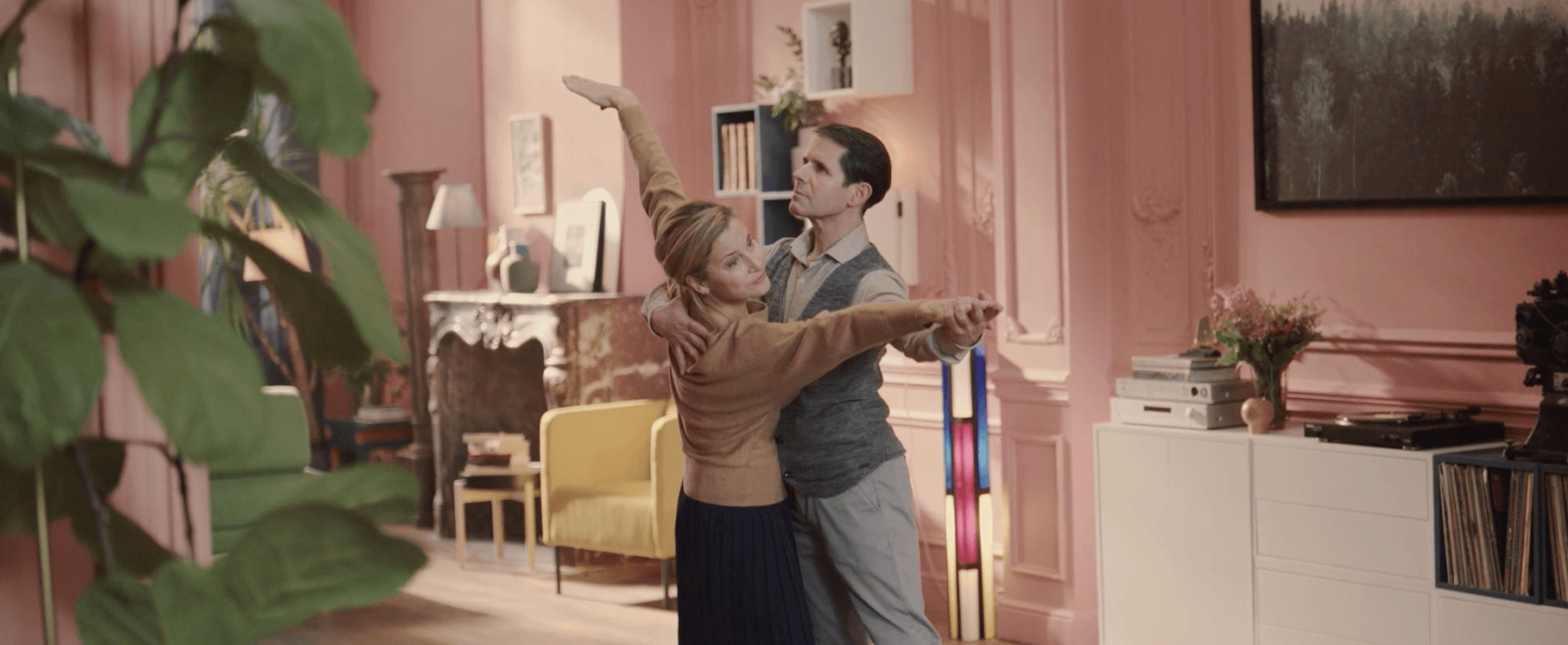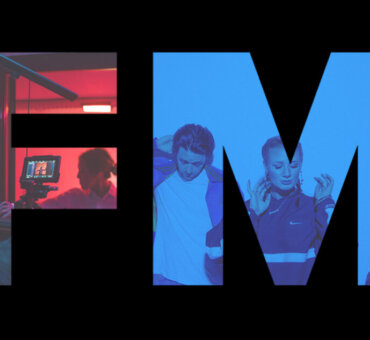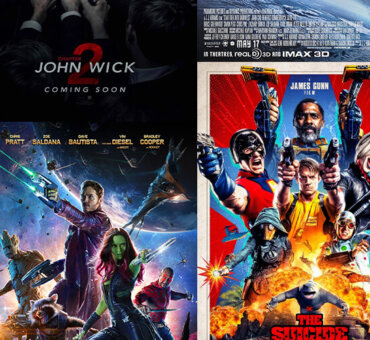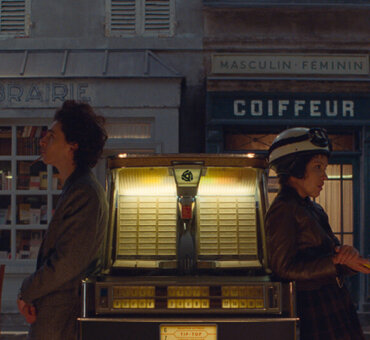Producers are the ultimate middle-man, balancing the tension between clients, directors, crew, and of course, the budget. It can be a tough place, but it’s made easier when you have the right North Star. For Producer Lander Engels, who’s been at Czar Belgium for nearly a decade, he puts creative relationships above all else:
“It’s a philosophy we have at Czar that we are a director-driven production company,” Lander told us. “As a producer, I always try to defend a director’s opinion and view on the work. Sometimes, it clashes with the agencies or the client and I have to convince them. It’s a challenging part of advertising.”
From concepts to shooting, if you’re able to support the creative, everyone wins—even if the client or agency needs convincing during the process. This is something Lander experienced first-hand through his production work on IKEA’s “ice skating” spot, battling everything from falls to lost footage. Keep your North Star ahead of you, and it will all work out in the end.
We sat down with Landers to talk about his perspective on producing, why he always puts directors first, and what he does to solve problems—head injuries and all.
Filmsupply: How did you get involved with Czar?
Lander Engels: I had the opportunity to meet a lot of people in production through my work with advertising agencies and I came in contact with Czar about 10 years ago. I saw their directors’ work, not only for advertising but also for feature films, and I was really impressed by their approach and how they saw things differently than a lot of other companies.
That’s what attracted me to them. After nine years at an advertising agency, I switched to Czar and I was dropped into production. In the years before, I had learned to edit and learned a lot of things in the film business, but the production side I had to learn by doing it myself.
I jumped into it and it felt right. The collaboration with the directors went well. I worked with a lot of advertising productions. We also did a lot of short films and music video clips where budgets were really low, and that was something completely different for me. Two years ago I produced my first feature film with one of our directors. Then, I switched back to commercials which I’ve done for the last couple of years.
Why go into production instead of editing or directing?
It was always my goal to work in the film industry. I was really attracted to photography and films. I went to a creative school myself, but I didn’t start my film education in school. For some reason, I wasn’t technically skilled in camera work or directing and I naturally went more towards production. I’ve always been good at organizing and working with different people, so that’s why I aimed towards production. It’s the combination of being interested in beautiful films and imagery working as a producer in a company like Czar because they make, in my opinion, different work from what we usually see in advertising.
It seems like there are two entry points for producers—the logistical and the creative.
I think so. There are two types of people in production. You have people who are practical, organized, good communicators, and they’re great at a to-do list. They keep an eye on things, but aren’t as interested in the creative part of it or don’t have an opinion at all. For example, they’ll start working on a project and may not even research the films of the director their working with.
These people can do their work as production managers, but they don’t always develop themselves into creative producers. That’s the difference between people who stick to production management and people who aim towards becoming a producer. Nevertheless, in Belgium, we have smaller budgets, so a producer in Belgium is also the production manager [laughs]. It’s the same person doing these two jobs more or less, especially for advertising.
Is it challenging to work with a company that creates such ambitious work?
The most challenging is always the budget. As you said, a lot of these projects are ambitious and our directors are all ambitious in their own way and it always comes down to budget and how I can fulfill their needs. How can I make something that’s outstanding and off the wall? The directors know quite well what they want. They have a clear view of it.
For me, it’s easier to work with these directors because they have a clear view of what they want, even if it’s not always easy to make that happen. At least it’s clear what you have to make happen. You have other directors who are also ambitious but they have more doubts, or no clear view, or they change a lot. For the producer or production manager, it’s more straightforward to go for something that is clear from the beginning.
It’s a philosophy we have at Czar that we are a director-driven production company. As a producer, I always try to defend a director’s opinion and view on the work. Sometimes, it clashes with the agencies or the client and I have to convince them. It’s a challenging part of advertising.
Is that a set rule or do you have to side with the client sometimes?
I’m always defending the director’s side. I understand the client may have a clear view on why they want something to be a certain way, or they have a strategic reason. They are the people who have a view on the overall image of the brand. Sometimes they have a remark that has nothing to do with the way you should film it or the way you should tell a story. It’s more about how the brand has to be positioned into that whole story.
But, if it’s more about how to style something or how to tell a story visually, that is something a director is skilled in and prepared to do. So, the director’s opinion or the DP’s opinion is way more important than the opinion of a creative or a client.
How did you bring the vision of IKEA’s ice skating spot to life?
It was a challenging job because of the restrictions in budget. And, we had to find the right people to do things on a wooden surface that they’d generally do on the ice. We also had to be able to work within one shooting day. That was a quite challenging job.
The director added a lot of stuff himself, but the basic idea was that it was an older couple enjoying their time at home. The ice skating part was brought up by the director, and of course, the basic concept was there through the agency. But it really evolved and changed into what the director added to it.
We were blessed to find the ice skating woman. She was a champion in Belgium and an Olympic Champion in ice skating. We were happy to find that person in Europe because she was teamed up with a partner from France. She was the right age, she had the right looks, she had the right skills and the right attitude as well.
Unfortunately, she fell during the shoot. The wooden surface was quite slippery. I did a lot of tests on how to limit that slippery effect but, in the end, she became quite tired because she had to skate for the whole day. And she fell. She had a head injury and wasn’t able to continue.
What did you do?
After that fall, we checked it with a doctor. She wanted to continue even though we said, “You should go to the hospital for an extra checkup.” Of course, we did. But, if it had been up to her, she would have come back and finished the job. For the shots we missed, we worked with the stand-in, who was actually her daughter. She was already on set to do some of the trickier parts, turning around and lifting.
Another thing happened where we lost part of the footage, too. Just after lunch, we had just done an improvisational dance of the couple in the living room. There was a technical problem with the cart and camera, and it erased the last hour of shooting in one second. We weren’t able to reboot or recover that data. So we had to redo it immediately. Everyone said, “Okay, let’s just go for it again.” And we succeeded. But of course, that made the shooting day even shorter.
How do you keep the set calm during situations like those?
You have to stay calm yourself. That’s most important. You can’t start shouting at someone who may have made that technical mistake with the footage. You have to be calm and quick, re-analyze the situation, and decide upfront what you should do. We may have been able to recover some of the data but we decided in that moment, “Okay, let’s just re-shoot.”
You have to make quick decisions upfront and I had to make sure we could shoot what we had to shoot. We also have to thank the DP. He’s the reason everybody stayed so long with us because he said, “Okay, let’s just do it guys.” If the DP says it’s okay, his camera people are with him. Everybody just went for it because shit happens.
It helps to have a close relationship with your crew in those moments.
It’s always nice to have a certain collaboration between the producer and a director because then you can both bring something to the table. That’s where you find a solution for the overall problem. For me, it’s about being able to combine the more production-related parts of the job—working with budgets and practical organization—with the more creative part, linking the right people to the right projects.
That’s an important skill for a producer, linking the right people to a director, DP, or art department. It’s something you should feel in a way and be able to feel in them. It’s not always exact or about making it happen within the numbers.
Do concepts ever scare you as a producer?
Yes, of course. Sometimes, when I read an idea or a basic concept, I don’t see what the director sees in it. I’ll see a script and say, “Okay.” We’ll bounce it to different directors and they’ll say, “It could be interesting if you see it like this or that.” And that’s what makes a director outstanding. To make something that is not really that interesting or special, but they give their opinion about it and then it becomes really interesting.
Sometimes, it can go all the way up until shooting. I’ll see something on set and think, “I guess that’s how he saw this transition. That’s interesting.” That’s really fulfilling as a producer, knowing that you can work with people who surprise you. Then you know you’re working with good people. And sometimes, ideas on paper are just really difficult to produce or to make work. And that can be frustrating. It may be the budget or whatever. And you, as a producer, have to be creative in another way, to have another perspective on a problem. Then, you find a solution.Read about commercial producer Javier Alejandro’s approach to pulling off massive productions.






